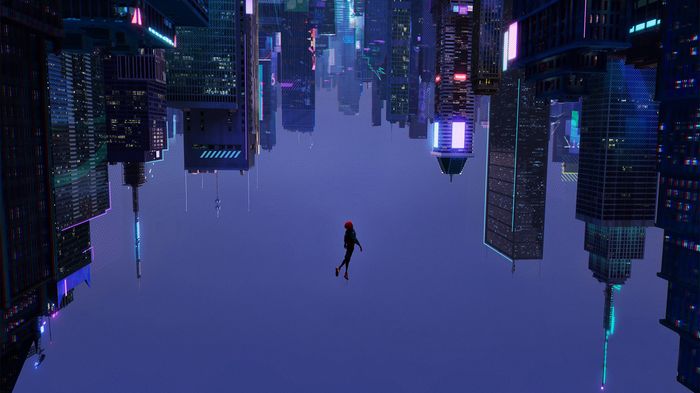Animation and the Pandemic
At a time when our own world is so confined, Alice Boud argues that animation opens up endless possibilities of alternate worlds, and brings a certain magic to the everyday.
Way back in April during lockdown #1, on a slow afternoon stuck with my family, my dad asked me if I wanted to watch Contagion, the 2011 pandemic thriller that was experiencing a surge of popularity (for obvious reasons). I remember feeling horror, a visceral aversion to being reminded of the reality of the crisis by a film, something that was meant to entertain and distract me. Since then, I found myself more and more gravitating to animation. But why was this? Was I simply trying to make the most of the Disney+ subscription I was accidentally paying for after my free trial, and catching up on all the Disney princess films I thought I was too cool for when I was a child? Or was there some deeper reason? What is it about animation that makes it the perfect form of film escapism in a global pandemic?
“They can create a whole other visual language, a stylised, perfect world that is only possible in animation.”
For most of us in the last few months, our own worlds have become limited and confined, at times to the few rooms of our houses. Animation on the other hand opens up the prospects of limitless worlds to explore. It invites us to suspend our disbelief, meaning these worlds are not limited to reality. Pixar has become an expert in drawing on our curiosity about where we could go, taking us to the past and the world of the dead in Coco (2017), to the future and outer space in Wall-e (2008), and even to the elaborate structure of our our own minds in Inside Out (2015). Animation is the realm of possibility — if you can imagine it, you can go there.
These worlds are enticing, not just because they are spatially remote from reality, but because they can create a whole other visual language, a stylised, perfect world that is only possible in animation. Wes Anderson’s distinct visual style and tendency towards a symmetry that would be impossible in the real world lends itself perfectly to the medium of animation, with his stop motion films Fantastic Mr Fox (2009) and Isle of Dogs (2018) showing this excellently. In fact, there has been a resurgence in films that exploit the stylised possibilities of animated art. Think perhaps of 2017’s beautiful biopic of the last days of the life of Vincent van Gogh, Loving Vincent, the first entirely hand-painted feature film, a perfect tribute to the late artist’s distinctive painting style. Or there’s 2019’s Spiderman: Into the Spider-verse, which creatively referenced its origins in comics through incorporating the graphic look of comic books. With a distinct art style for each of the incarnations of Spiderman, the film perfectly reflects the endless possibilities of the animated world.
“The attention to detail required to make a visual story out of nothing can elevate the everyday, bringing some much-needed magic to aspects of our lives.”
I’ll leave it to science to try to explain why, but during the pandemic, many of us have been experiencing oddly vivid dreams (my extensive anecdotal evidence gathered on socially-distanced walks confirms this). Animation could not be more perfect to explore this, lending itself naturally to creating dream worlds. Some of the best animated films are explicitly or coded to be about where the imagination can take us in our dreams. There’s Alice in Wonderland (2010), fleshing out a captivatingly surreal dreamland, or the more ambiguous is-it-real or is-it-child-hallucination in the delightful fantasy of My Neighbour Totoro and Spirited Away (1988 and 2001), or the more sinister world of Coraline (2009). Animation arrives at what our frustrated unconscious, dreaming its way out of a boring pandemic, reaches for.
But animation doesn’t just transport us away from an unwelcome reality. Unlike in live-action, every single detail has to be drawn, built, or coded. The attention to detail required to make a visual story out of nothing can elevate the everyday, bringing some much-needed magic to aspects of our lives. The beautiful films of Studio Ghibli do this immaculately, with the ritualistic food scenes of Ponyo (2008) and Howl’s Moving Castle (2004), making the simple act of preparing a meal ridiculously appealing. At a time when we’re forced to appreciate the simple acts of existence, these films can help us see their potential to be more special.
So now more than ever, don’t torture yourself with a gritty realist drama (and especially not one about anything resembling a global pandemic), but rather indulge in the magical escapism of animation.
 News / Caius mourns its tree-mendous loss23 December 2025
News / Caius mourns its tree-mendous loss23 December 2025 News / Clare Hall spent over £500k opposing busway 24 December 2025
News / Clare Hall spent over £500k opposing busway 24 December 2025 Comment / The ‘class’ of Cambridge24 December 2025
Comment / The ‘class’ of Cambridge24 December 2025 Comment / Yes, I’m brown – but I have more important things to say22 December 2025
Comment / Yes, I’m brown – but I have more important things to say22 December 2025 Interviews / Politics, your own way: Tilly Middlehurst on speaking out21 December 2025
Interviews / Politics, your own way: Tilly Middlehurst on speaking out21 December 2025








